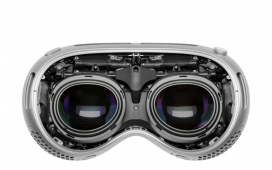In a detailed iPhone 16 Pro teardown, iFixit provided a closer look into Apple’s latest Pro models, shedding light on several changes in their internal design. Released just days after the iPhone 16 series hit the market, the teardown offers a first glimpse at how Apple has engineered the iPhone 16 Pro for improved repairability and performance.
Battery Design Differences Unveiled
The iPhone 16 Pro teardown highlights a noticeable difference in how Apple handles battery encasement. Unlike the standard iPhone 16, which features a simplified battery removal system, the Pro models stick with stretch-release adhesive for the battery. The teardown also revealed a curious decision—Apple encased the iPhone 16 Pro’s battery in metal but left out this feature in the iPhone 16 Pro Max. iFixit expressed confusion over why only one of the Pro models received this upgrade, calling the decision “perplexing.”
While the Pro models don’t have the same easy battery replacement process as the standard version, accessing the interior remains more convenient. Apple allows technicians to open the device from the back, reducing the risk of damaging the front display.
Another key revelation in the iPhone 16 Pro teardown relates to the positioning of the LiDAR scanner and mmWave antenna. In previous versions, the LiDAR scanner was under the main camera assembly, making it challenging to repair. With the iPhone 16 Pro, Apple has made this component more accessible for repairs.
Additionally, the mmWave antenna has been shifted to accommodate the new Camera Control button, placing it in a hollowed space at the top of the phone. However, iFixit raised concerns about signal performance due to the titanium frame that could interfere with mmWave reception.
USB-C Port and Logic Board Improvements
One of the most significant changes revealed in the teardown is the redesigned USB-C port. While the removal process for the USB-C port has been simplified, iFixit noted a downside—Apple doesn’t sell replacement USB-C ports, complicating repairs for this crucial component. Fortunately, other internal adjustments, such as an easier-to-remove logic board, make working on the device more manageable. Only the upper speaker assembly needs to be removed to access the logic board, which represents a significant improvement from previous models.
Rumors had swirled around the possibility of the iPhone 16 Pro models featuring Qualcomm’s X75 modem. However, the iPhone 16 Pro teardown revealed that Apple is instead using a custom Qualcomm SDX71M modem, a modified version of the SDX70M modem found in the iPhone 15 Pro. This revelation puts to rest speculation about the inclusion of newer modem technology in the iPhone 16 Pro.
With all the changes in mind, iFixit awarded the iPhone 16 Pro a repairability score of 7 out of 10. This score reflects the design improvements Apple made to enhance the repair experience, though certain choices, like the USB-C port issue and the unexplained battery differences, left room for improvement. Despite these quirks, the iPhone 16 Pro’s internal design marks a positive step forward for Apple’s Pro series.









